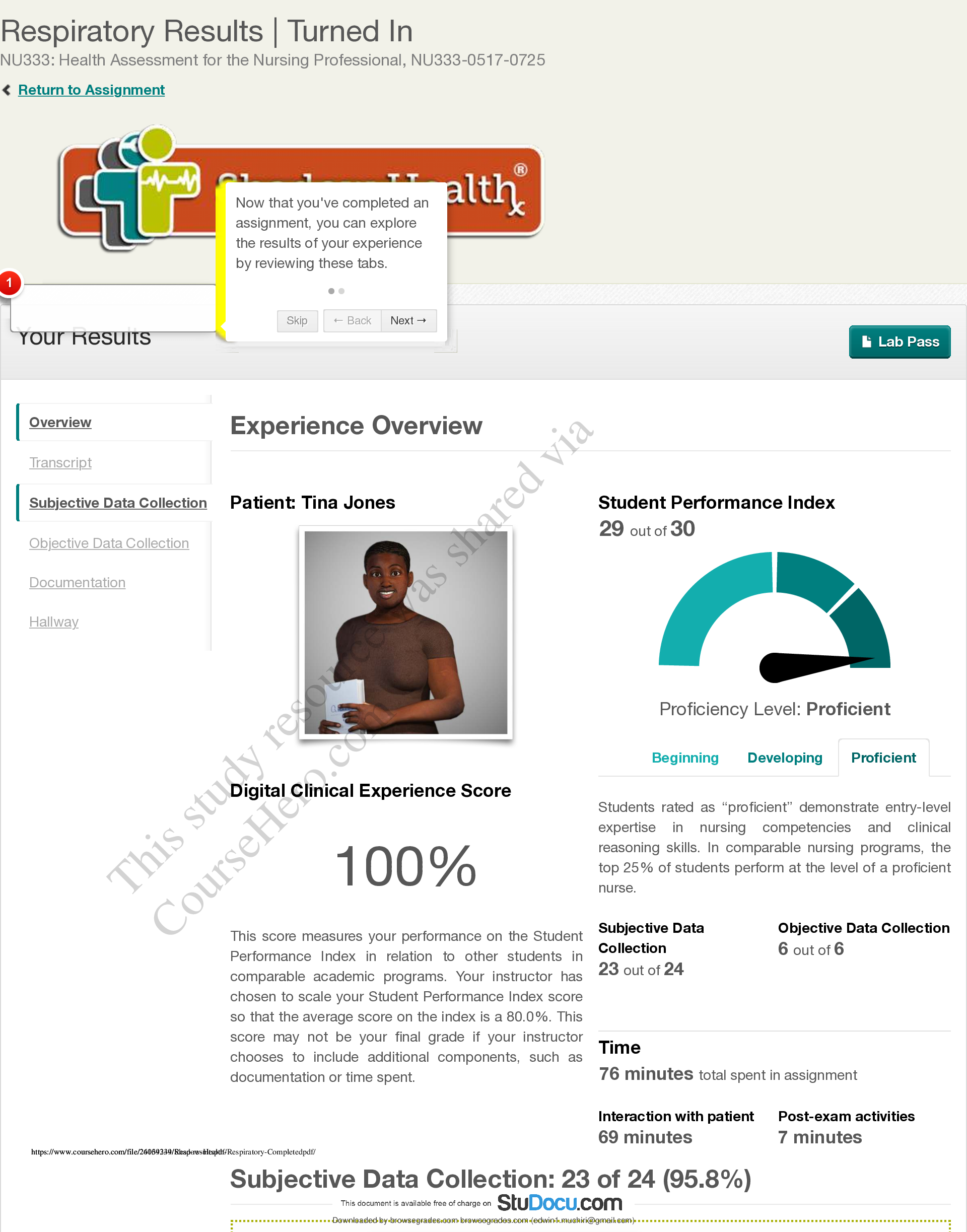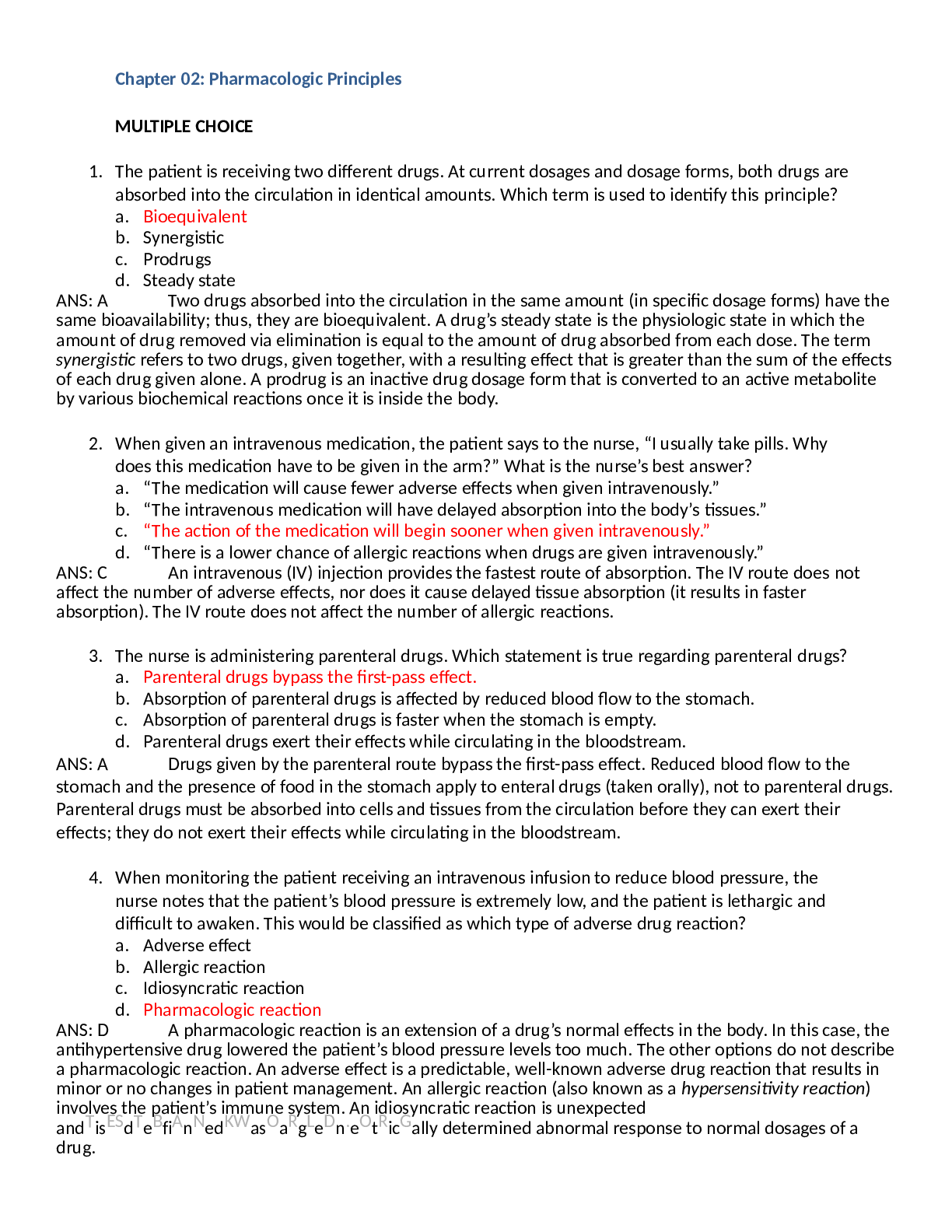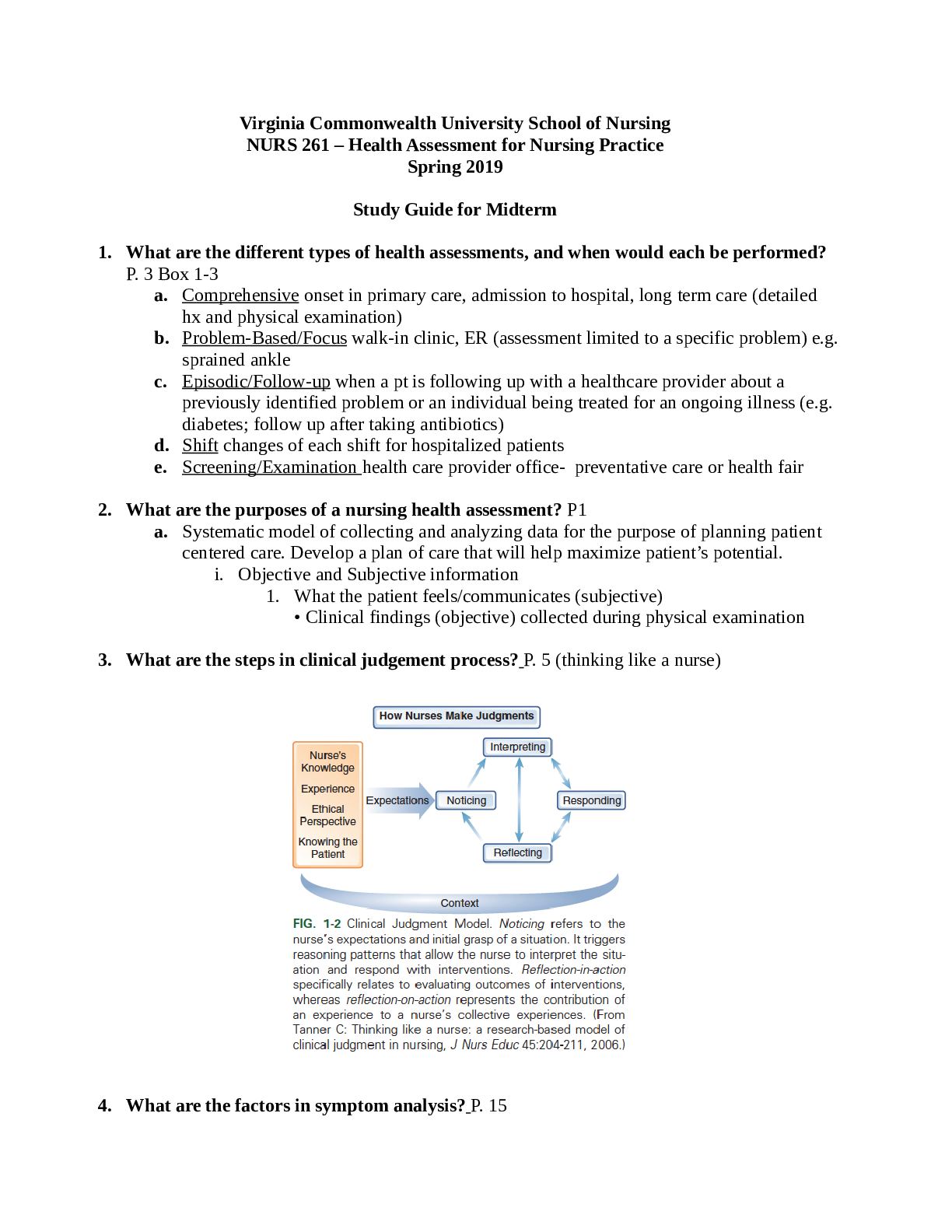*NURSING > QUESTIONS & ANSWERS > GCU NUR643E Midterm Exam 2019 - NUR643E Advanced Health Assessment for Nurse Educators (All)
GCU NUR643E Midterm Exam 2019 - NUR643E Advanced Health Assessment for Nurse Educators
Document Content and Description Below
NUR643E Advanced Health Assessment for Nurse Educators Week 5 Midterm Quiz 1)Adam is a very successful 15-year-old student and athlete. His mother brings him in today because he no longer studies, ... works out, or sees his friends. This has gone on for a month and a half. When you speak with him alone in the room, he states it “would be better if I was not here.” What would you do next? a. •Tell him that he has a very promising career in anything he chooses and soon he will feel better. b. •Tell him that he needs an antidepressant and it will take about 4 weeks to work. c. •Speak with his mother about getting him together more with his friends. d. •Assess his suicide risk. 2)Mr. Chin is an 82-year-old man who presents to your office for a routine check. On examination, you notice a somewhat high-pitched murmur in the second right intercostal space during systole. It does not radiate and the rest of his examination is normal for his age. Which is true of the most likely cause of this murmur? a. •It often increases carotid upstroke. b. •It carries with it increased risk for cardiovascular disease. c. •It is usually accompanied by an S3 gallop. d. •It is found in 10% of otherwise normal elderly patients. 3)Mrs. Fletcher complains of numbness of her right hand. On examination, sensation of the volar aspect of the web of the thumb and index finger and the pulp of the middle finger are normal. The pulp of the index finger has decreased sensation. Which of the following is affected? a. •Median nerve b. •Ulnar nerve c. •Radial nerve 4)You are assessing a patient for peripheral vascular disease in the arms, secondary to a complaint of increased weakness and a history of coronary artery disease and diabetes. You assess the brachial and radial pulses and note that they are bounding. What does that translate to on a scale of 0 to 3? a. •0 b. •3+ c. •2+ d. •1+ This study source was downloaded by 100000831988016 from CourseHero.com on 06-05-2022 05:36:45 GMT -05:00 https://www.coursehero.com/file/79678381/midterm-examdocx/ 5)A 70-year-old retired auto mechanic presents to your office because his neighbor is concerned about his memory. The patient himself admits to misplacing his keys more often and forgets what he is supposed to buy from the grocery store and where he has parked the car. He denies getting lost in familiar places. Upon further questioning, he states that his wife of 40 years died 8 months ago; his three children live in three different states; and he has limited his activities because the people he interacted with were “his wife's friends, not his.” He drinks a six-pack of beer daily; he does not smoke or use illicit drugs. You perform a mini-mental state examination and obtain a total score of 24 out of 28. Based on this information, what is the most likely condition? a. •Benign forgetfulness b. •Dementia c. •Meningitis d. •Depression 6)You are screening people at the mall as part of a health fair. The first person who presents for screening has a blood pressure of 132/85. How would you categorize this? a. •Normal b. •Prehypertension c. •Stage 1 hypertension d. •Stage 2 hypertension 7)A 17-year-old high school senior presents to your clinic in acute respiratory distress. Between shallow breaths, he states he was at home finishing his homework when he suddenly began having right-sided chest pain and severe shortness of breath. He denies any recent traumas or illnesses. His past medical history is unremarkable. He doesn't smoke but drinks several beers on the weekend. He has tried marijuana several times but denies any other illegal drugs. He is an honors student and is on the basketball team. His parents are both in good health. He denies any recent weight gain, weight loss, fever, or night sweats. On examination you see a tall, thin young man in obvious distress. He is diaphoretic and is breathing at a rate of 35 breaths per minute. On auscultation, you hear no breath sounds on the right side of his superior chest wall. On percussion, he is hyperresonant over the right upper lobe. With palpation, he has absent fremitus over the right upper lobe. What disorder of the thorax or lung best describes his symptoms? a. •Spontaneous pneumothorax b. •Chronic obstructive pulmonary disease (COPD) c. •Asthma d. •Pneumonia 8)When assessing the lung fields, what [Show More]
Last updated: 1 year ago
Preview 1 out of 6 pages

Reviews( 0 )
Document information
Connected school, study & course
About the document
Uploaded On
Jun 05, 2022
Number of pages
6
Written in
Additional information
This document has been written for:
Uploaded
Jun 05, 2022
Downloads
0
Views
68

.png)
.png)
.png)
.png)
.png)
.png)
.png)
.png)
.png)
.png)
.png)

.png)

.png)
.png)
















